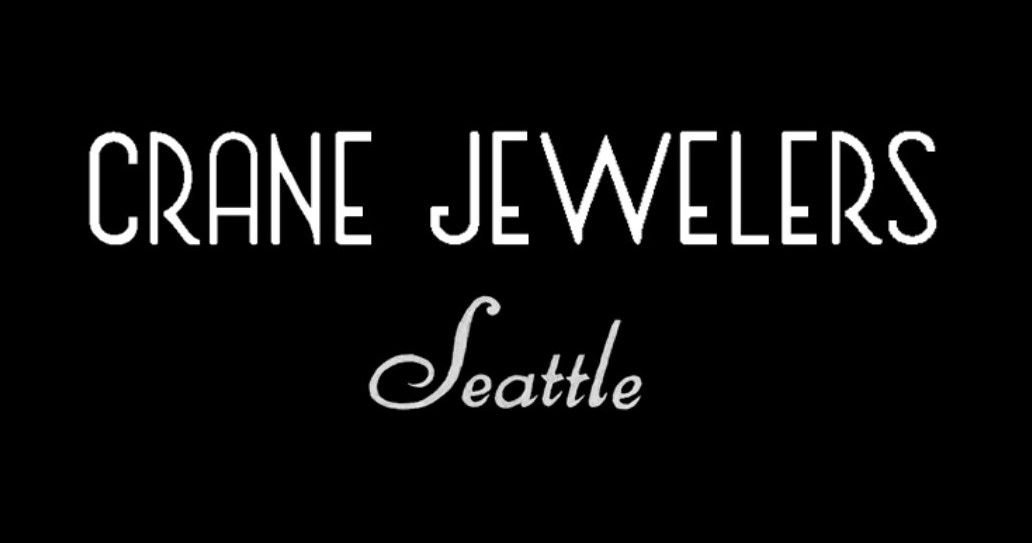The Restoration of an Edwardian Lavaliere
Restored Edwardian Lavaliere
An antique lavaliere necklace from the Edwardian period returned to it’s original brilliance by Crane Jewelers Limited
A lavalier is the type of pendant popularized in the late 17th century by the Dutchess de la Valliere, a mistress of King Louis the XIV of France. The name was eventually shortened to “lavalier(e)”. The lavalier is distinguished from other types of pendants by a center drop (usually a stone) which is directly attached to the chain without a bail or removable connection device.
An antique lavaliere necklace from the Edwardian period had been damaged and one of our clients brought it into our shop in need of repair… This particular necklace had been hand built at the turn of the 20th century and consisted of a 15 inch long, platinum rectangular link chain. Dropping from the chain, in decorative bezel set links, were 17 round old European cut diamonds and six bezel-set fancy cut aquamarines: three cushion cut, one oval , and two marquise cut. See Fig 1.
The necklace’s center piece was a briolette cut aquamarine measuring 18.2mm x 7.3mm, weighing approximately 7.5 carats. The stone was set in a hand made, platinum tapered mounting and suspended on a section of platinum chain that allowed it to swing freely at the center of the necklace.
In order to secure the briolette cut aquamarine to the platinum cap it had been cross-drilled horizontally through the top near the end. The cap was drilled in the place that corresponded to the briolette and fitted over the drilled end covering the hole. A platinum pin was inserted through both parts and riveted on the outside.
The rivet was burnished and the cap polished to make the rivet become almost invisible.
The Miracle Stone
Unfortunately; The aqua took a hit at some point and the end of the briolette that was hidden inside the platinum cap shattered, allowing the gem to swing freely on the pin. The stone was barley attached and it is a miracle that it was not lost.
We removed the pin to free the briolette cut aquamarine for examination. The stone was severely compromised, the top of the aquamarine was completely missing just above the drilled hole.
In order to re-attach the stone it would be necessary to re cut and polish the end and to drill a new hole, at a lower point on the briolette.
No matter what, the briolette could not be re-set into the original cap as it was. The aperture was too small to accommodate the re-cut stone. We normally prefer for the extent of any restoration to be minimal to avoid clouding the view of the original work,and damage historical significance. We decided to undertake a Historical restoration. This involved using authentic period details, materials, tools and techniques and extensive research. Our goal was to preserve all the work that was still good, repair or restore what is missing and broken so it would blend seamlessly with the original and re-create the appropriate patinas and surfaces so the new work would be difficult if not impossible to detect.
We made the decision to make an addition for the original mounting by extending and lengthening the cap with the addition of a new platinum collar to be attached at the bottom, accommodate a new pin, and secure the briolette.
Our greatest concern in the design and execution of these repairs was to ensure that the new work blended into the original and that the elegant line of the drop be maintained.
Modern briolette pendants tend to be heavy, we drilled and sawed openings into the extended cap, lighten it visually, matching the original design motifs and allowing light to penetrate the stone…
The briolette cut aquamarine was polished and once again cross-drilled horizontally, through the top, near the end. The cap was placed over the end, covering the hole and the stone was pinned to the cap in a manner similar to what had been originally used. However; We did not rivet the pin. We felt that hammering the tapered platinum cap over the aquamarine would create stress on the stone. This type of internal stress may have added to the original problem with the pendant, making the stone prone to breakage. We chose instead to bead the pin ends in a manner and with a technique that was used during the period in which the piece was originally created. This technique does not cause pressure to be exerted on the briolette and is therefore safer for the stone…


